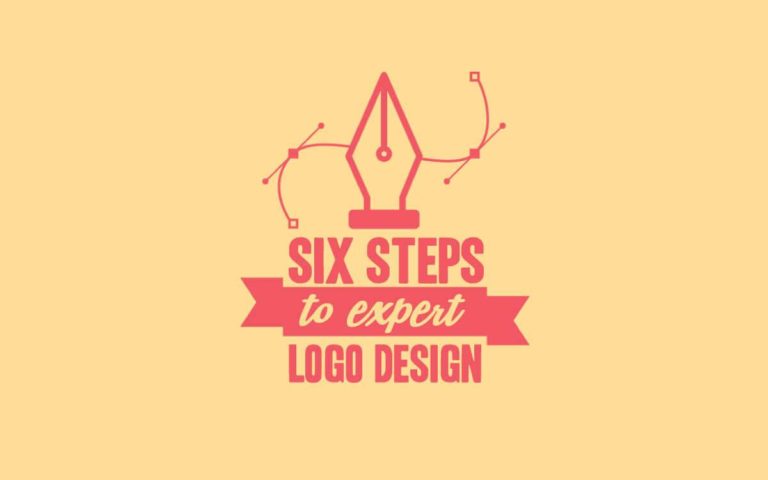There will probably come a time in your small business’s lifetime when your website isn’t meeting your business needs anymore. That’s when it’s time to consider a website redesign.
As you know, your website is not static; it should constantly be evolving and changing as you gather user data. The content, images, and even layout will change depending on the user data and the functionality of your website.
So, when do you move from updating your website to a full website redesign?
Continue reading to demystify the myths of website redesign and development.
To Need or Not to Need? That Is the Question
A website redesign should not be entered into lightly, but there are definitely some key reasons your website would need a new look – on the frontend and the backend.
Websites are an investment; we want to ensure you’re investing properly and at a time that makes sense for your small business. So to get started, let’s address the things you shouldn’t put your website through the redesign for.
When Do You Not Need a Website Redesign?
If You’re Going Through an Awkward Phase
Is your brand going through a transition phase? Maybe you haven’t settled on a style just yet. Hold off on the website redesign – you don’t want to confuse your customers by changing the brand style a couple of times.
The website redesign should come in after your brand guidelines are complete and you know the look and feel you’re going for.
If The Changes Are Internal or Small
Are small changes being made to your website? Or are there small, internal changes? That won’t call for a complete redesign of your website.
Many times, a website redesign is thrown into the mix for a brand update. If your brand update solely comprises of new colours and fonts, most likely your current website can be updated to match.
A website update and a website redesign are two distinct things. While a website update consists of small tweaks done through the backend to change either colour, size or perhaps tidy a section of your website, a complete redesign would only be required if the current functionality is not meeting your business needs.
You always want to build an effective website that will ultimately benefit your business and not just a pretty rearranged website that doesn’t function well.
What Is a Functional Website?
A website redesign always comes down to the functionality of your website. If the website is not meeting your business or user needs it’s time for a new one!
Since it comes down to functionality, let’s take some time to understand what a functional website is. Functionality can be taken for granted by the average client, however, it’s crucial to the success of your website. These are some contributing factors to a functional website.
A functional website is:
- One built with an audience and their customer journey in mind. Since a functional website has been developed with a customer journey in mind, the website has an easy navigation allowing the visitors to be comfortable and use their intuition to “surf” the website.
- Due to the customer journey, a functional website is built around the visitors’ needs. Typically the most viewed or searched for pages are highlighted to stand out from the rest of the website – this contributes to an optimal user experience.
- Is clear, clean and clutter free – all the HTML and backend is validated with no broken links for high performance.
- Has a reduced amount of time for the pages to load, in order to facilitate engagement and retain the visitor’s attention.
- Is optimised for mobile and other screens.
One could say a functional website is like a really good customer service team. It is a stepping stone in the customer journey and helps you complete your business goals.
Now you know the reasons not to perform a website redesign and understand the importance of a functional website, let’s address some of the reasons why would you need a website redesign.
When Do You Need a Website Redesign?
These are the most common reasons companies would need to look at website design and development again.
Website Coding Issues
Your website is comprised of the frontend, the area you can see, and your backend, the coding languages that make up the frontend.
The frontend and backend of your website are both comprised of code. The coding of your website affects every area of the site – from things like your website loading speed to the page layout to how large your images are displayed to how your website is viewed on different devices.
Basically, the coding of your website is pivotal.
A website audit can help determine if your code is up to par. If you’re unsure, you can have someone complete a website audit for you.
There are free tools to help you determine how your website is functioning. Google webmaster and your Google Search Console have ones to test speed and site structure, while Yellow Lab Tools has a “report” and a score it offers your website. Use tools like these to get an idea of how your website is functioning from a development point of view.
Not everything is about looks, a website might look good, but if it’s poorly coded, it can hurt conversions and sales.
User Experience Complaints and Design Issues
The user experience (UX) of your website is how easy the website is to navigate.
UX has many different components. The UX design plays into the brand consistency of your website, the page purpose and layouts, the navigation, and the credibility of your site.
If you have had complaints about the functionality or usability of your website that is the user experience and is reason enough to redesign your website.
According to Sweor, 77% of agencies believe a bad website user experience (UX) is a weakness for their clients. On the same breath, 88% of online consumers are less likely to return to a site after a bad experience.
Negative feedback about your website is not the end of the world and should be viewed as a good thing. It gives you the opportunity to create a better experience. Most times, our clients confide the reason they realise they need to redesign their website is they received negative feedback about their current website. If you’re one of those people, and you’ve obtained negative feedback, hold onto that feedback. You can use your user feedback to improve the user experience.
When thinking of conducting a redesign, try to get in touch with your users and generate feedback about your site. This helps you determine the current state, and if users like your website, find it easy to navigate and maybe why they aren’t converting or completing actions you would like. If a redesign is needed, this data only helps feed a better, new design.
Rebrand
If you’ve gone through a rebrand, chances are you’ll need a new website to match!
A rebrand is an in-depth analysis of your business.
As we touched on earlier, changing your fonts and colour palette is not necessarily a reason to change your website. Many times with a rebrand, though, it is completed during a period of growth and the customer journey is assessed. New features can be added to the website to help drive customers into your marketing funnel.
Rebrands can also be completed because a company is growing into other services or industries. Maybe they’re expanding the reach of their product, and the website would need to reflect these changes.
Your website should not only look like your brand but complete all of your brand functions. For instance, if you’re a retail store and you decide to expand location and offer online purchasing, that requires some changes to your website!
Outdated or Unattractive
Does your website still have those 2000 gifs dancing on every page? Time to redesign. It’s ok to redesign your website because it doesn’t look as fresh as it could be.
An unattractive site deserves a website redesign.
Ultimately, your website is the number one salesperson. It will tend to be the first point of contact for a customer and probably be in more contact with your clients than anyone else in the company.
Your website needs to be a true reflection of your brand.
According to a study, it takes about 50 milliseconds (that’s 0.05 seconds) for users to form an opinion about your website that determines whether they like your site or not and whether they’ll stay or leave.
If that’s the case, an obsolete website will give the wrong impression of your company.
Other Reasons
This is not a finite list. The main thing to keep in mind when considering a website redesign is is your website doing what you need it to do?
Consider:
- Is it an easy process for your customers to check out or complete a task?
- Is it easy to navigate the website?
- Can you view your website on a mobile device and a tablet? Is it still easy to navigate on them?
- Are users completing the actions you want them to complete? I.e. are they signing up for your newsletter, buying products and others.
- Does your website reflect your brand values?
- Does your website reflect your brand identity?
These are some basic questions to get you thinking about how effective your website is and utilising your website to its fullest potential.
A Small Website Redesign
Remember, when redesigning you don’t have to change the whole aesthetic or whole website. You can redesign the not-so-great elements and components of your website and substitute them for more contemporary and updated ones – creating elements that are actually functional and not just pretty. Redesign for the win!
A website redesign should not be undertaken lightly but can also be the next step for your business. Take some time to review the goals of your website. Ensure your website is meeting them and if not, assess how you can improve your website.
A website redesign is sometimes just what the brand doctor ordered.
Hopefully, they’ll help you reach a much more informed decision.



